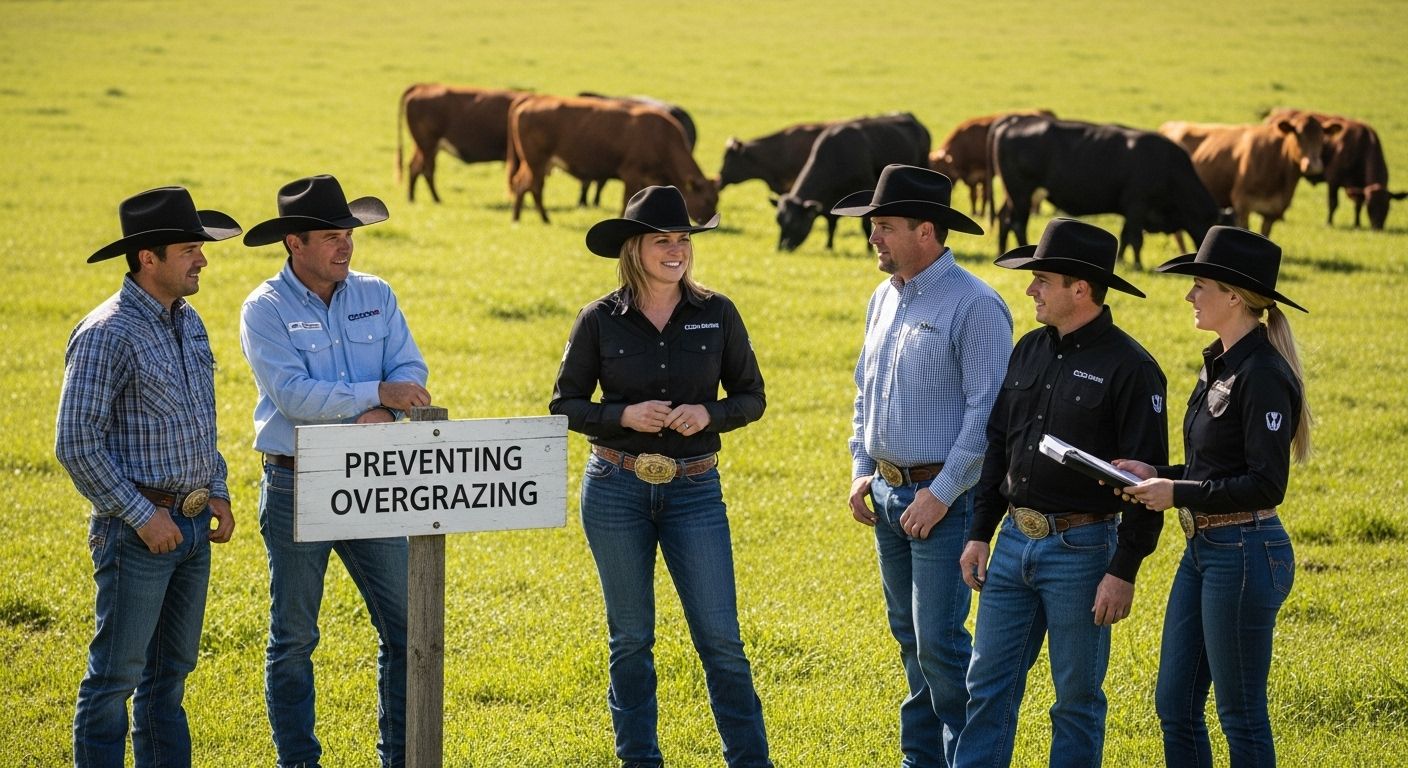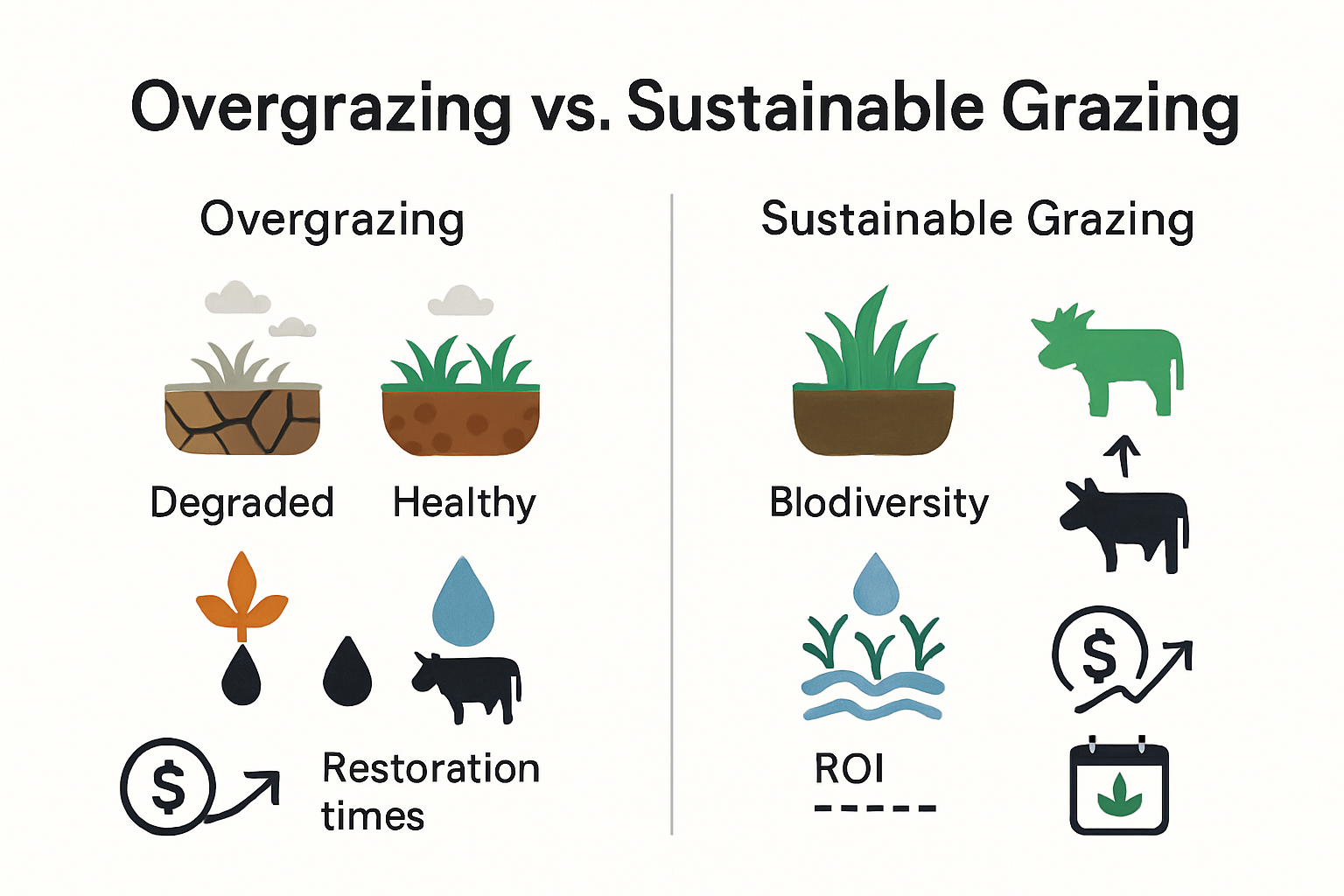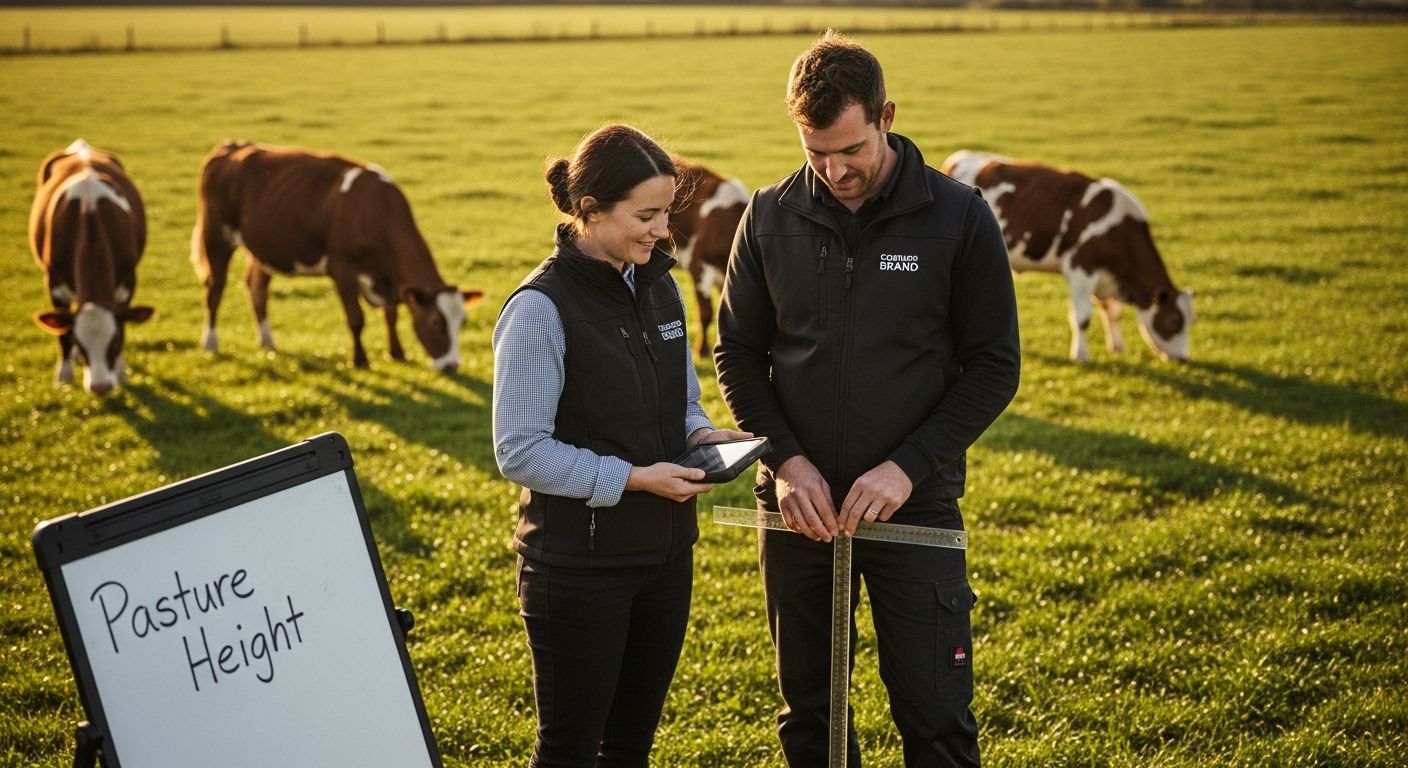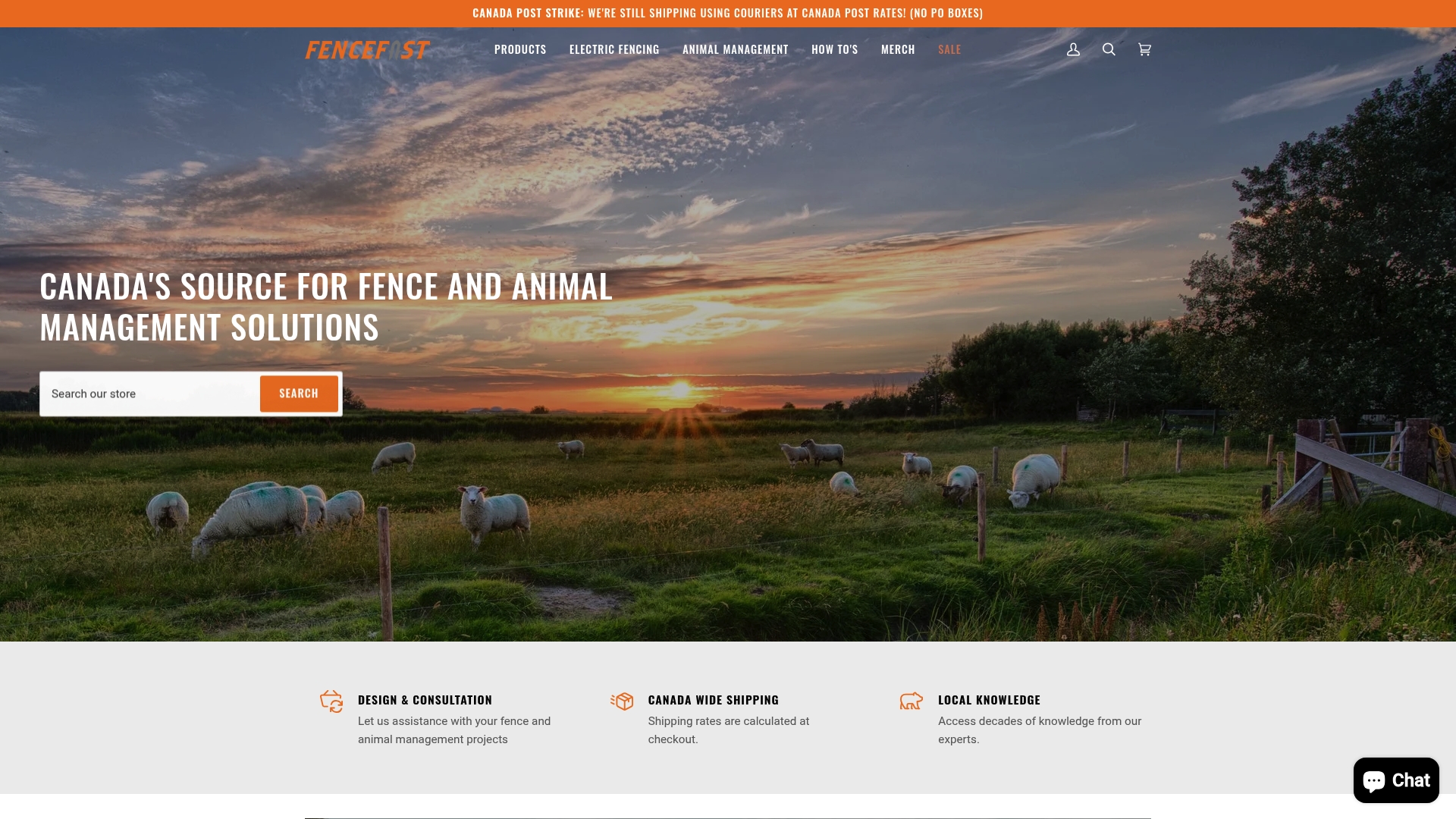
Managing land for grazing looks simple on the surface. You give animals space to roam and expect lush grass to grow back every season. But here is what might surprise you. Overgrazing is responsible for as much as 50 percent of global grassland degradation, according to the FAO. The real solution is not about cutting back your herd or pouring money into fertilizers. It starts with changing how, when, and where your animals graze. The smartest strategies focus on working with nature, not against it.
Table of Contents
- Understanding The Causes And Impact Of Overgrazing
- Best Practices For Preventing Overgrazing In Pastures
- Tools And Technologies To Support Grazing Management
- Benefits Of Sustainable Grazing For Landowners And Livestock
Quick Summary
| Takeaway | Explanation |
|---|---|
| Implement rotational grazing | Move livestock between paddocks to allow pasture recovery. |
| Monitor pasture height regularly | Assess grass height to prevent overgrazing and ensure plant health. |
| Utilize advanced monitoring technologies | Incorporate digital tools for tracking pasture conditions and livestock health. |
| Adjust livestock numbers based on conditions | Align animal population with pasture productivity to avoid overstocking. |
| Sustainable practices enhance both ecology and economics | Implementing sustainable grazing benefits land health while providing economic returns. |
Understanding the Causes and Impact of Overgrazing
Overgrazing represents a critical challenge in agricultural and rangeland management that can devastate ecological systems and agricultural productivity. When livestock consume vegetation faster than plants can naturally regenerate, the consequences extend far beyond simple pasture degradation.
Root Causes of Overgrazing
Multiple interconnected factors contribute to overgrazing. Research from the Food and Agriculture Organization highlights that economic pressures and limited land management knowledge often drive unsustainable grazing practices. Farmers and ranchers might inadvertently overstock their lands, believing more animals will generate higher economic returns. However, this approach ultimately leads to significant long-term ecological and financial losses.
Key root causes include:
- Economic Constraints: Limited financial resources preventing proper land rotation
- Lack of Knowledge: Insufficient understanding of sustainable grazing techniques
- Limited Infrastructure: Inadequate fencing or pasture management systems
Ecological Consequences of Overgrazing
Grassland degradation studies reveal that continuous overgrazing triggers severe environmental transformations. When animals consume grass faster than it can regrow, the land experiences profound structural changes. Soil becomes compacted, reducing water absorption and increasing erosion risks. Native plant species decline, creating opportunities for invasive vegetation to dominate.
To help readers quickly understand the ecological impact of overgrazing, here is a summary table outlining the main environmental consequences discussed in the article.
| Ecological Consequence | Description |
|---|---|
| Soil Compaction | Reduces water absorption and increases risk of erosion. |
| Decreased Native Species | Leads to a decline in native plant species and rise of invasives. |
| Reduced Biodiversity | Disrupts the balance of local flora and fauna, decreasing overall ecosystem resilience. |
| Loss of Ground Cover | Exposes soil, making it vulnerable to erosion and deteriorating soil health. |
| Harm to Soil Microorganisms | Damages essential soil life, further degrading land productivity. |
The ecological impact extends beyond immediate vegetation destruction. Overgrazing disrupts entire ecosystem dynamics, reducing biodiversity and compromising the land’s natural resilience. Soil microorganisms suffer, ground cover diminishes, and the intricate balance of local flora and fauna becomes severely compromised.
Economic and Agricultural Implications
Beyond environmental concerns, overgrazing represents a significant economic challenge for agricultural producers. Degraded pastures produce less nutritious forage, directly impacting livestock health and productivity. Reduced vegetation means lower carrying capacity, forcing ranchers to invest more in supplemental feed and land restoration.
The long-term economic consequences can be substantial. Restoration of overgrazed lands requires significant investment in soil rehabilitation, reseeding, and potentially years of careful management. Proactive prevention proves far more cost-effective than remediation, underscoring the importance of understanding and implementing sustainable grazing strategies.
By recognizing the complex causes and multifaceted impacts of overgrazing, farmers and ranchers can develop more holistic land management approaches that balance economic needs with ecological sustainability.

Best Practices for Preventing Overgrazing in Pastures
Preventing overgrazing requires a strategic and proactive approach to pasture management. Successful land stewardship involves understanding the delicate balance between livestock needs and grassland health.
Implementing Rotational Grazing Systems
Colorado State University Extension recommends a critical practice of removing animals when grass is grazed down to 3 to 4 inches. Rotational grazing stands out as the most effective method for preventing overgrazing. This approach involves dividing pastures into multiple paddocks and systematically moving livestock between these areas.
Key benefits of rotational grazing include:
Below is a table summarizing key benefits of rotational grazing, as highlighted in the section on best practices for preventing overgrazing.
| Benefit | Explanation |
|---|---|
| Controlled Grazing | Enables management of vegetation consumption to prevent overuse. |
| Recovery Time | Allows pastures enough time to regenerate before grazing again. |
| Even Nutrient Distribution | Promotes more uniform manure spread across different pasture areas. |
-
Controlled Grazing: Allows precise management of vegetation consumption
-
Recovery Time: Provides pastures sufficient time to regenerate
-
Even Nutrient Distribution: Promotes more uniform manure spread across pastures
Monitoring Pasture Height and Vegetation Health
University of Maryland Extension emphasizes the importance of maintaining appropriate post-grazing residual heights. The “take half, leave half” rule becomes crucial in sustainable pasture management. Illinois Extension suggests leaving sufficient leaf tissue to ensure plants can continue photosynthesis and maintain root energy reserves.
Effective monitoring involves:
- Regular visual pasture assessments
- Measuring grass height before and after grazing
- Tracking vegetation density and diversity
- Identifying early signs of potential overgrazing

Strategic Livestock Management
Successful overgrazing prevention requires careful livestock population management. This means calculating the appropriate number of animals based on available pasture area and vegetation productivity. Stocking rates must align with the specific carrying capacity of your land.
Consider these strategic approaches:
- Conduct periodic land assessments to determine optimal livestock numbers
- Use temporary fencing to create smaller, more manageable grazing areas
- Implement cross-fencing to facilitate easier rotation
- Adjust animal numbers based on seasonal vegetation growth
By integrating these best practices, farmers and ranchers can maintain healthy pastures, support robust livestock production, and preserve long-term land productivity. Preventing overgrazing is not just about management techniques but represents a holistic approach to sustainable agricultural ecosystem maintenance.
Tools and Technologies to Support Grazing Management
Modern grazing management relies increasingly on technological innovations that help farmers and ranchers optimize their land use and prevent overgrazing. By leveraging advanced tools and strategic technologies, land managers can make more informed decisions about livestock management and pasture health.
Digital Monitoring and Planning Systems
The U.S. Geological Survey has developed sophisticated digital tools like the Grazing Management Tool (GMT), which integrates complex spatial datasets including vegetation cover, biomass, and water features. These digital platforms enable precise ecological monitoring and strategic planning.
Key digital technologies include:
- Satellite Mapping: Tracks vegetation growth and land conditions
- Geographic Information Systems (GIS): Provides detailed landscape analysis
- Remote Sensing Tools: Monitors pasture health in real-time
Precision Livestock Management Technologies
The University of Vermont Extension highlights emerging technologies that transform traditional grazing practices. GPS tracking, wearable livestock sensors, and automated monitoring systems now provide unprecedented insights into animal behavior and land utilization.
Advanced technologies enable:
- Precise animal location tracking
- Individual animal health monitoring
- Automated grazing pattern analysis
- Real-time environmental condition assessment
Sustainable Infrastructure and Energy Solutions
The National Drought Mitigation Center emphasizes the importance of infrastructure in effective grazing management. Modern farmers can leverage innovative solutions like solar-powered electric fencing systems to create flexible, sustainable pasture management strategies.
Infrastructure innovations include:
- Solar-powered electric fencing
- Automated water distribution systems
- Portable and modular fencing solutions
- Smart energy management technologies
By integrating these advanced tools and technologies, farmers can develop more responsive, data-driven approaches to grazing management. These innovations not only prevent overgrazing but also promote more sustainable, efficient agricultural practices that balance ecological preservation with productive livestock management.
Benefits of Sustainable Grazing for Landowners and Livestock
Sustainable grazing practices represent a holistic approach that simultaneously benefits landowners, livestock, and the broader ecosystem. By implementing strategic management techniques, agricultural producers can achieve multiple positive outcomes that extend far beyond traditional livestock production.
Ecological Restoration and Environmental Benefits
The USDA Climate Hubs emphasize the profound environmental advantages of sustainable grazing methods. Rotational grazing enhances soil structure, increases biodiversity, and promotes significant carbon sequestration. These practices directly contribute to ecosystem resilience and environmental health.
Key ecological benefits include:
- Soil Health Improvement: Enhanced organic matter and microbial activity
- Water Quality Protection: Reduced erosion and improved watershed management
- Biodiversity Enhancement: Supporting native plant and animal species
- Carbon Sequestration: Mitigating climate change through natural carbon storage
Economic Advantages for Landowners
Research published in the Journal of Animal Science demonstrates that adaptive multi-paddock grazing can generate substantial economic returns. By optimizing land use and livestock productivity, farmers can reduce operational costs while improving overall agricultural output.
Significant economic benefits encompass:
- Reduced feed supplementation expenses
- Enhanced livestock health and reproduction rates
- Increased land productivity and carrying capacity
- Lower maintenance and restoration costs
- Potential access to carbon credit markets
Livestock Health and Performance Improvements
Sustainable grazing practices directly contribute to improved livestock welfare and performance. By providing animals with diverse nutritional environments and reducing stress, farmers can achieve superior animal health outcomes.
Livestock performance advantages include:
- More balanced and diverse nutritional intake
- Reduced disease transmission risks
- Lower stress levels through natural grazing behaviors
- Improved weight gain and reproductive efficiency
- Enhanced immune system functionality
Through strategic implementation of sustainable grazing techniques, landowners create a win-win scenario that balances economic productivity with environmental stewardship. These approaches represent a sophisticated understanding of agricultural ecosystems, demonstrating that responsible land management can simultaneously support financial success and ecological preservation.
Frequently Asked Questions
What are the main causes of overgrazing?
The main causes of overgrazing include economic constraints, a lack of knowledge about sustainable practices, and limited infrastructure for pasture management. Farmers may unintentionally overstock their land in pursuit of higher economic returns.
How can rotational grazing help prevent overgrazing?
Rotational grazing involves dividing pastures into multiple paddocks and moving livestock systematically between them. This practice allows vegetation to recover, promotes even nutrient distribution, and manages grazing pressure more effectively.
What technologies can support effective grazing management?
Technologies that can support grazing management include digital monitoring systems, precision livestock management technologies, and sustainable infrastructure solutions like solar-powered fencing. These tools aid in tracking pasture conditions and livestock health.
What are the environmental benefits of sustainable grazing practices?
Sustainable grazing practices improve soil health, enhance biodiversity, protect water quality, and promote carbon sequestration. By managing grazing pressure, these practices contribute to overall ecosystem resilience and environmental health.
Take Control of Overgrazing With Proven Fencing and Livestock Solutions
Have you struggled to keep your pastures healthy or noticed signs of overgrazing, like patchy grass, soil compaction, or declining animal performance? Sustainable grazing is only possible with the right infrastructure in place. Rotational systems, proper livestock management, and regular monitoring are far easier when you have access to strong, flexible fencing and animal management tools.

Ready to protect your land and maximize both productivity and animal health? Visit FenceFast.ca to explore fencing supplies, electric fencing systems, and advanced livestock management equipment designed for successful pasture rotation and animal care. Shop now to get everything you need for smarter grazing practices and sustainable land management. Your pasture’s future starts today.
Recommended
-
[
Lamb Packer – FenceFast Ltd.
-
[
Gallagher KIWITAH 3 X Grounding Kit for Large Energizer – FenceFast Ltd.
](https://fencefast.ca/products/gallagher-kiwitah-ground-stake-kit)
-
[
Plastic Drum with Lid - 15 Gallon, Open Top, Blue – FenceFast Ltd.
](https://fencefast.ca/products/plastic-drum-with-lid-15-gallon-open-top-blue)
-
[
Gallagher MBS2800i Multi Power Fence Energizer 28 Joules – FenceFast Ltd.
](https://fencefast.ca/products/gallagher-fence-energizer-mb2800i)
